Where to with coast redwood tree stocks
Rob Webster, New Zealand Tree Grower May 2024.
Coast redwood Sequoia sempervirens is an increasingly popular species and is being planted by small and large-scale growers. Although it was introduced by early settlers, no formal redwood breeding programme has been sustained in New Zealand. Growers buy tree stocks from nurseries often without good knowledge of the potential timber properties of the trees they are planting. The NZFFA Sequoia Action Group has been working hard to increase the supply quality of those with proven timber properties.
Coast redwood is now the second most widely planted species after radiata pine as growers increasingly look for alternatives.The area of redwood plantations in New Zealand is well over 10,000 hectares, putting the species alongside cypress in terms of total planted area.
Coast redwood can be regarded as the ultimate clonal softwood because it is well-known for its coppicing ability.Vegetative propagation from the best trees provides a means of readily obtaining high levels of genetic gain. However, clones are expensive and take time to produce. As a result, there is a reluctance by producers to grow significant numbers without having confirmed orders for them.This can create an imbalance between demand and supply.
The collection of seeds to grow seedlings can help to meet the demand for tree stocks, but in the absence of a tree breeding programme, the ability to provide seedlings with a level of genetic improvement is limited.The NZFFA’s Sequoia Action Group has identified an opportunity to supply good quality tree stocks to growers, but the challenge it faces is to find trees of known, desirable genetics from which to collect either seed or vegetative material for propagation as clones.
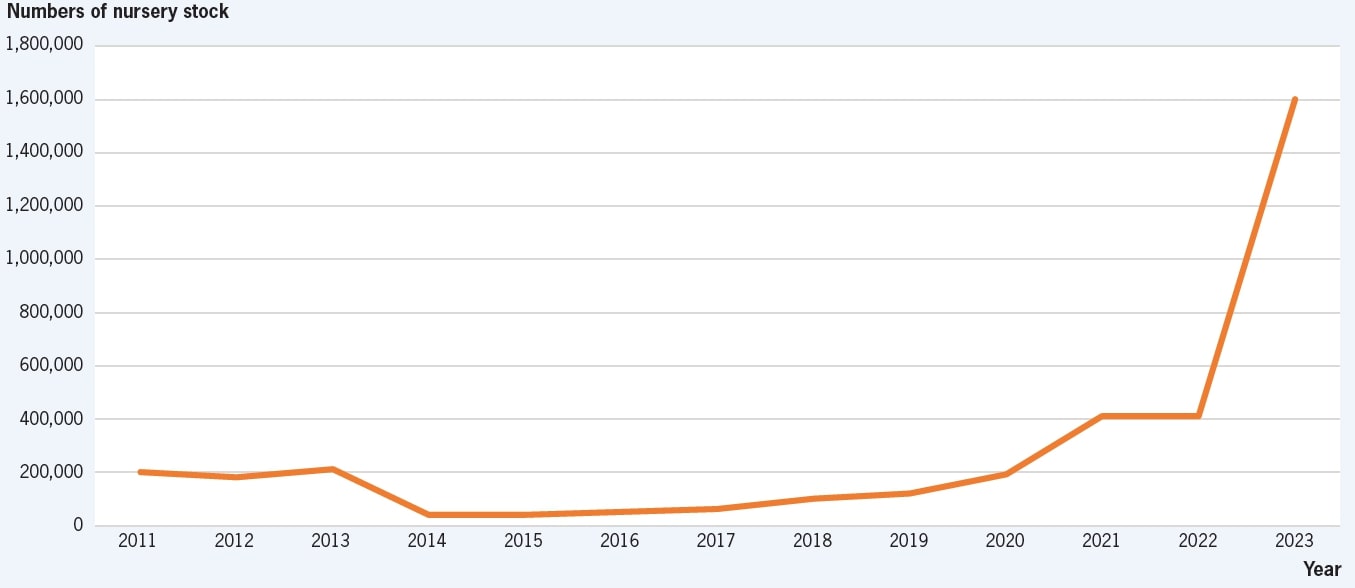
Quality criteria
Growers buying tree stocks need some indication that the trees they are planting will meet certain quality criteria.Where timber production is an objective, the wood produced needs to meet perceived future market requirements.Therefore, as well as good survival, growth and form, criteria such as the basic density of the timber, heartwood volume and durability are all important for commercially available redwood tree stocks.
There are three main sources of coast redwood tree stocks –
- Seedlings grown from seeds imported from California, the home of coast redwood
- Seedlings grown from seeds collected in New Zealand
- Clonal material propagated from coppice regrowth after trees have been harvested.
Seedling supply
Imported seed
Most redwood seeds imported into New Zealand in recent years have come from the southern zone of its natural range in California.Tree stocks produced from this seed are considered less suitable for New Zealand conditions, but seed production from this zone is more regular, whereas seed production from the more desirable northern zone relies on infrequent mast years. The central zone rarely produces seed.
Redwoods from these three zones are considered to be separate races, based on the differing composition of terpenes and terpenoids – these are compounds found in the tree resins. However, they are not considered sufficiently different to be regarded as separate sub- species.
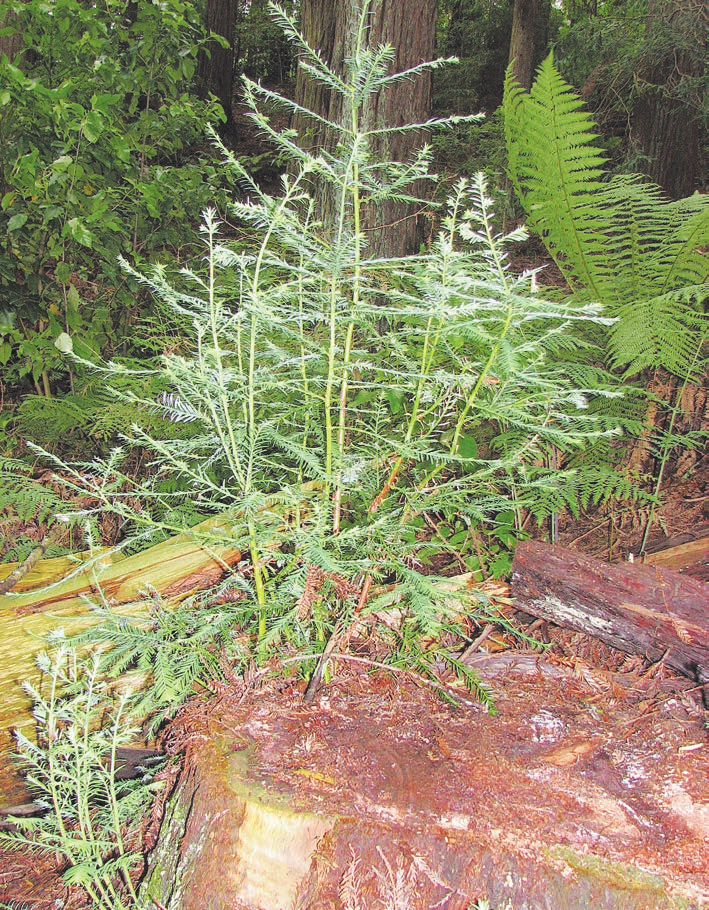
New Zealand seeds
Collecting seeds from New Zealand redwoods has the advantage of enabling a level of quality control. Seeds are collected by arborists climbing the trees.Trees with superior growth and form are termed ‘plus’ trees and they produce ‘climbing select’ seed.The plus trees have been tested for wood quality criteria and produce ‘elite’ seed.‘Bulk’ seed is collected from other trees within the stand, but not from inferior trees and those with defects. Seedlings grown from New Zealand seeds display a high level of resistance to infection from local strains of Botrytis spp., whereas seedlings grown from imported seed suffer high levels of mortality.
Although the age of cone production can vary considerably, not all stands appear to produce cones and not all trees within cone-producing stands produce them. In addition, pollen is shed in late winter so that wet weather can severely affect cross pollination, resulting in low seed yields. As a result, the quantity of seeds obtained by Sequoia Action Group collection has been insufficient to meet the increased demand for tree stocks.
The case for clones
Collecting material for clones involves identifying trees of superior growth and form and wood quality from within stands and then collecting coppice shoots after the trees are harvested. Care must be taken to identify the origin of vegetative shoots as those arising from a burl at the base of the tree will be of unknown physiological age. In addition, the juvenile clones may display undesirable characteristics such as excessive branching, double leaders or excessive epicormic shoots which were not apparent in the aged parent tree from which they were selected. Clonal trials are therefore necessary to further refine selections.
Most early redwood clones were introduced to New Zealand by the Soper Wheeler Company in the early 2000s under an agreement with the Simpson Timber Company.The Simpson Timber Company was at the time the only Californian company with a coast redwood tree improvement programme from the development of a seed orchard and from clonal propagation.The Simpson clones were selected solely based on growth and form with no consideration of wood quality.The basic density and heartwood durability of some of these clones has now been tested in New Zealand and found to be very poor.These clones should no longer be propagated for sale in New Zealand.
Clonal selections were carried out in New Zealand by several groups when the opportunity arose, and in recent years also by other forestry companies in California. In most cases, wood properties of the parent tree have been evaluated, including basic density, heartwood content and durability. In the case of some clones, the wood properties of progeny were also tested when the trees were old enough. Not all clones are easy to propagate, and high production costs may result in the rejection of otherwise potentially outstanding clones. Further research is required to improve the propagation of such candidates.
Although clonal propagation of coast redwood is the logical means to distribute genetic gain most rapidly, we need to be assured that the pool of clones made available to forest growers meets an industry standard of the desirable attributes.There is also the need to continue to make further selections to provide some diversity and improvement in desirable genetic traits.This begs the question of where such selections will come from.
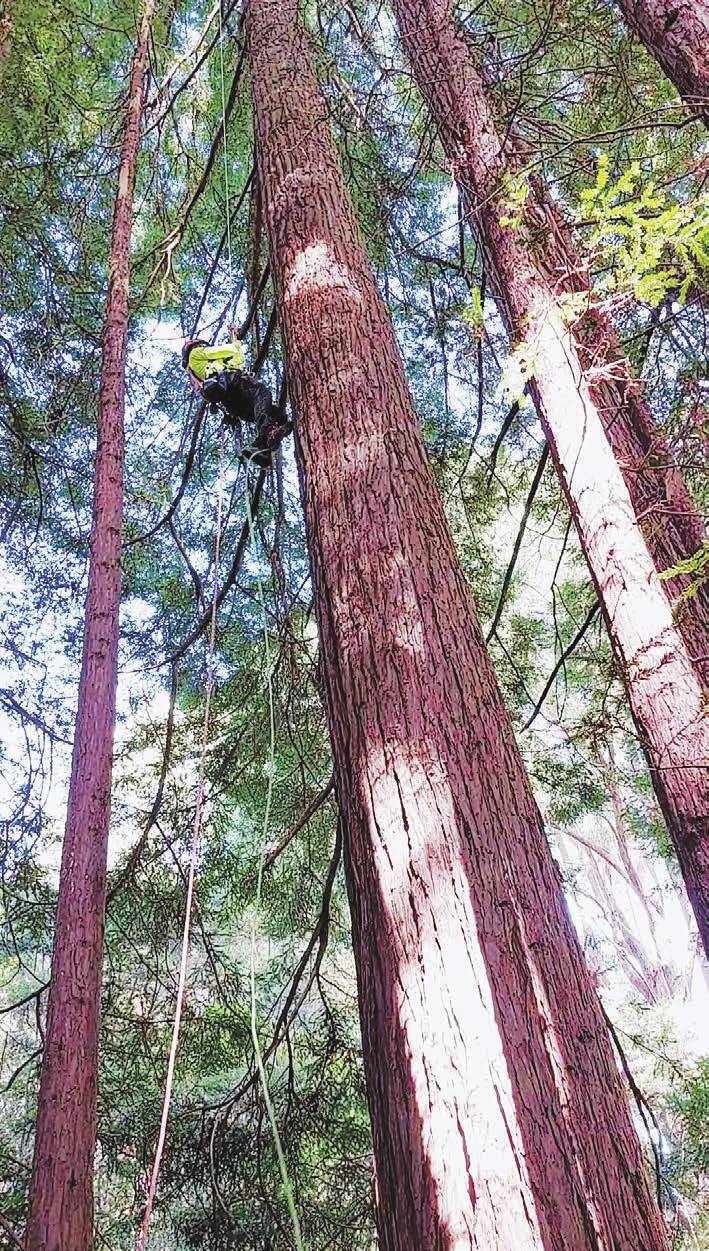
The Sequoia Action Group’s hunt
In 2023 the Sequoia Action Group obtained funding from the Forest Growers’ Levy Trust to investigate the seed production of various other suitable stands around the New Zealand to increase the supply of local seeds. However, the exercise was not particularly successful because few seed producing stands were discovered which displayed good genetic diversity.
There are a few stands around New Zealand established from seeds collected from the famous Whaka stand. Seeds from this source were used to establish a representative New Zealand land race in the Rotoehu provenance trail, but this stand performed poorly, and it was concluded that the seeds from this source were from a very narrow genetic base and showed in-breeding.
Kuser trial
Farm foresters familiar with the Kuser trial may also wonder whether any of the genotypes in this trial have potential for a future breeding programme.The short answer is no because the objective of this trial was to evaluate genotypes from different parts of redwood’s natural range rather than to select trees of good growth and timber potential. A study of two of the full Kuser trials by Meason et al in 2013 found medium-to-high genetic control for all growth and wood property traits measured, except epicormics.This is encouraging because it means breeding is likely to produce significant gains for these traits.
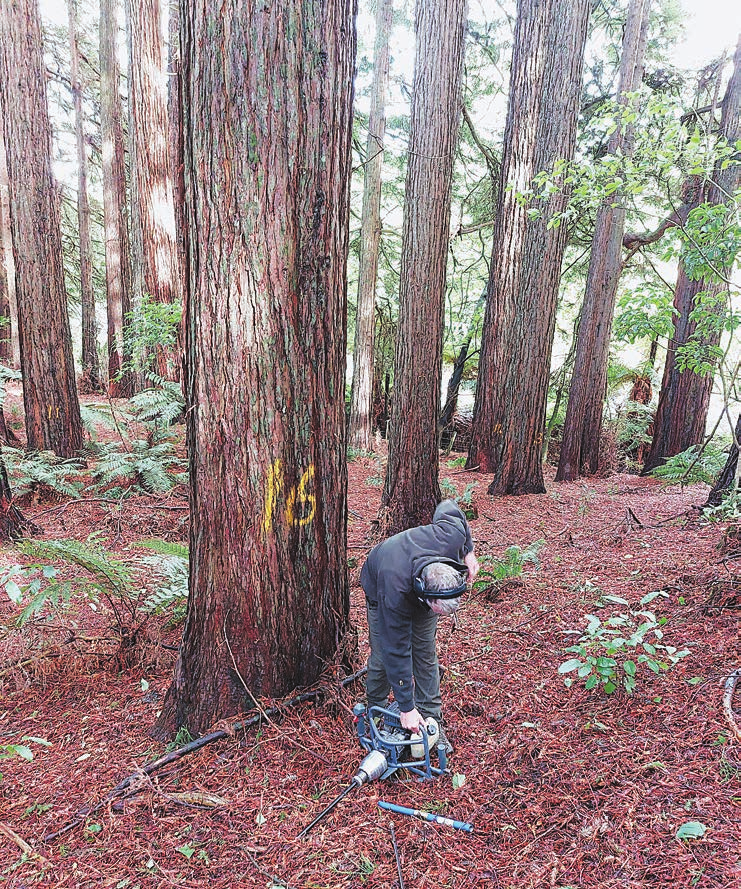
The way forward
Fortunately, most of the redwoods planted in New Zealand in the past came from seeds collected from the northern zone and superior trees from any remaining stands provide a valuable resource for further genetic selection. In 2023 the Sequoia Action Group received a second grant from the Forest Growers’ Levy Trust to identify trees of superior growth and form in various coast redwood stands around New Zealand and take core samples so that basic density and heartwood durability could be assessed.
The best trees identified, with above average basic density and low heartwood mass loss, in other words high durability, could then provide a pool of trees from which mature budwood could be collected from the tops of the trees, either by arborists, or by using a drone fitted with a grab.The budwood would be propagated either as mature cuttings or by grafting on to rootstock to contribute to a clonal archive and develop a seed orchard.The existing clones which met selection criteria could be added to this pool.
The photograph below is a stand in Mangatu Forest established with seeds from a reliable, genetically diverse source.The stand provided trees for a sawing study and has provided some good clonal selections after harvest.
A total of 230 trees were sampled by extracting cores, with 82 of them from stands older than 34 years. Data for another 59 samples from older trees were contributed from a sampling programme independently funded in 2022. From this pool of 141 mature trees, 36 were identified as meeting the high selection criteria for the collection of budwood. An application was made for funding in 2024 to collect budwood from the plus trees identified and initiate the propagation of the collection. However, the funding application was unsuccessful.
Other ways need to be found to achieve the aim of increasing the supply of quality redwood tree stocks to growers more cheaply. Perhaps there will be interest from the corporate forestry sector, who in some cases are turning to redwood as an alternative to radiata pine, to collaborate with the Sequoia Action Group in developing a coast redwood tree improvement programme and funding other research initiatives.
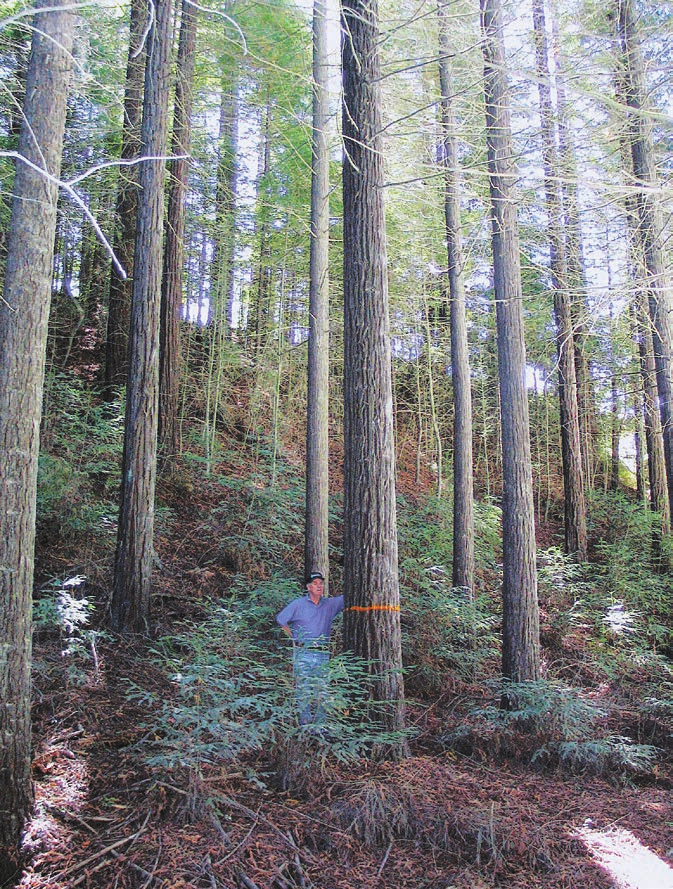
Obtaining good quality tree stocks
In the short term, small-scale growers wanting to plant redwoods in 2024 or 2025 are advised to contact the Sequoia Action Group and ask about the availability of tree stocks.The advertisement on the inside front cover of this issue of Tree Grower have details of who to contact.
The photograph below shows redwood seedlings being grown under contract at Appletons Nursery. The left row is from seeds imported from California, the right rows are from seeds collected by the Sequoia Action Group.
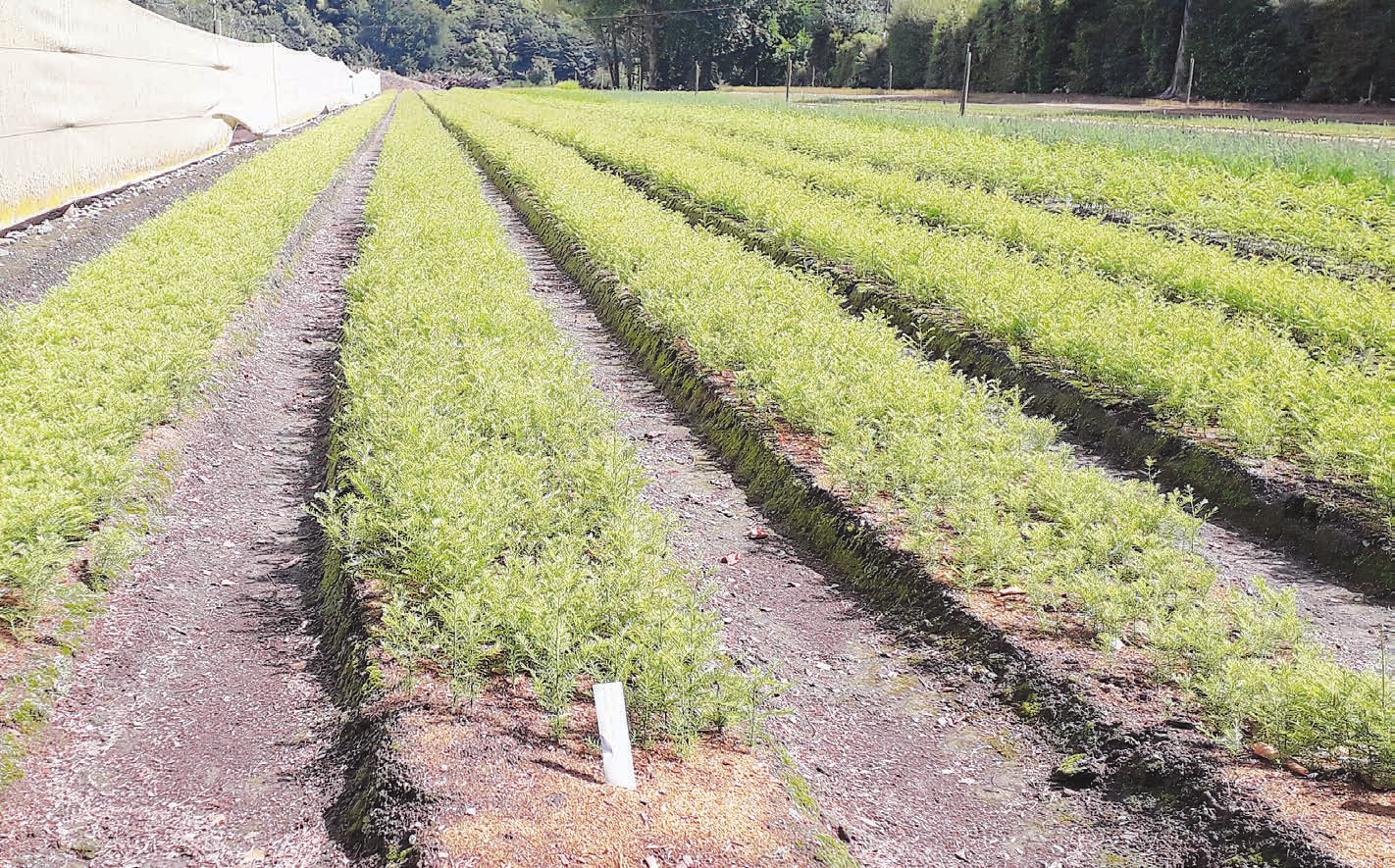

 Farm Forestry New Zealand
Farm Forestry New Zealand